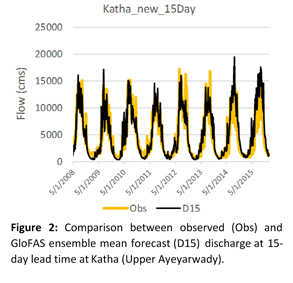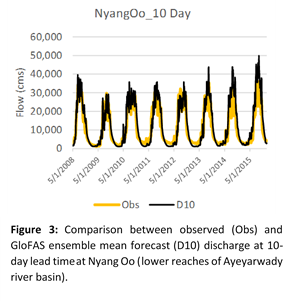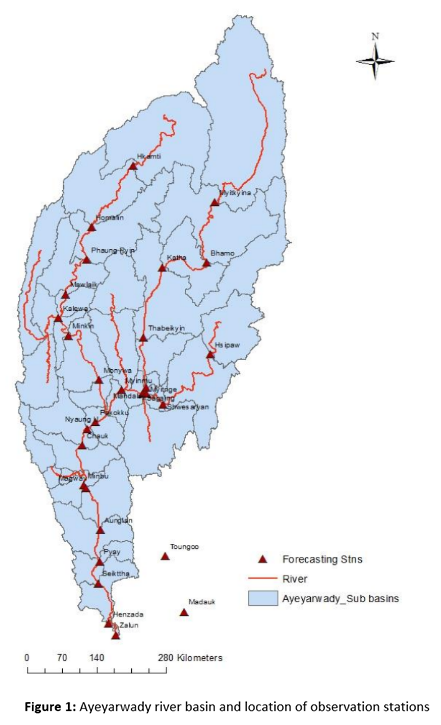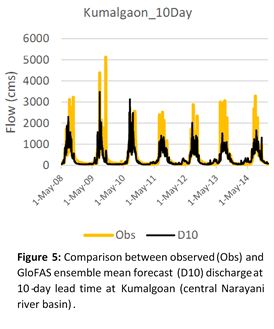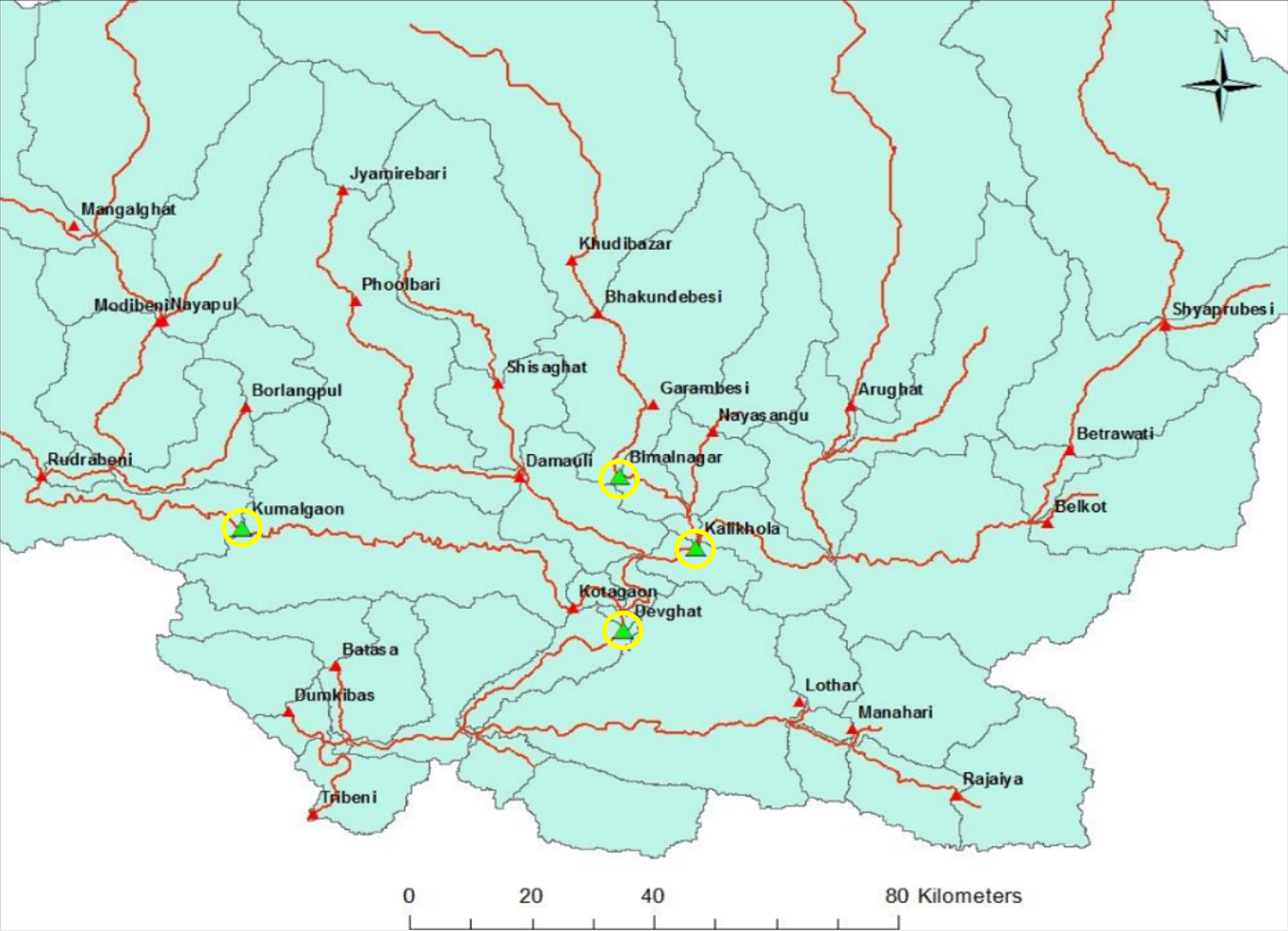The Narayani river basin is located in the Himalayas, and has a total drainage area of 32,000km2. The river system has five major tributaries, two of which originate in the Tibet Autonomous Region of China, while the remaining three originate within Nepal’s
borders. The Narayani River joins the Ganges River in India. This basin, which contributes 50% of the country’s hydropower, has seen several major floods in the last two decades.
Four locations (Fig. 4, circled)
were chosen for the performance analysis in the Narayani river basin, which has a complex, mountainous topography. These locations were selected to represent the flow drained by the western part of the Narayani at Kumalgaon, the central
part at Bimalnagar, the eastern part at Kalikhola and the basin outlet at Devghat
Overall, GloFAS was found to underestimate the flow in the Narayani basin, in terms of the ensemble mean, particularly at Kalikhola where the flow magnitude is significantly underestimated at all lead times, although the seasonal cycle is captured well.
For each location, GloFAS performs well in terms of the timing of the peaks. At Kumalgoan and Bimalnagar in the central part of the basin, there is reasonable and useful skill up to 15 days lead time (figure 5 shows an example
for Kumalgoan), despite the underestimation of the peak magnitude of the events. The results also show that past 15 days lead time, the model performance drops in this basin, as after day 15 there is no precipitation input to the
forecast.
